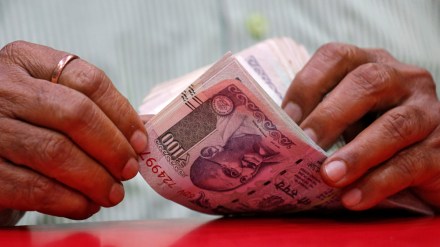The Union government is likely to lower its market borrowings in the second half of the current financial year from the level expected earlier, and rely more on a burgeoning small savings kitty to finance the budgeted fiscal deficit, a senior official said on Thursday.
The move is prompted by robust small savings collections coupled with a recent spurt in inflation that could keep interest rates high for an extended period of time.
The government had budgeted gross market borrowings of Rs 15.43 trillion for FY24, of which Rs 8.88 trillion is being borrowed in the first half. Over the last few years, the Centre typically borrows 60% of its borrowing target in the first half and balance in the second. States usually borrow a larger part of their requirement in H2.
With higher resort to National Small Saving Schemes (NSSF) would help moderate the yields on the government securities (G-secs), and the borrowing costs.
As against the budget target of Rs 4.09 trillion of net small saving receipts in FY24, 34% has already been achieved so far in FY24, the official said. Net small savings receipts grew 48% on year in Q1FY24 compared with just 9.9% in the corresponding quarter last year, the official added.
As for various small savings schemes,. the collections under the revamped Senior Citizens scheme (SCSS) jumped 187% on year to Rs 57,283 crore till July-end this fiscal. Similarly, the newly launched Mahila Samman Savings Certificates plan fetched Rs 9,611 crore till mid-August in the current fiscal, with an average deposit of Rs 60,829, by 1.58 million new accounts opened by women. “Given this scenario, the government may rejig the H2FY24 borrowing to further reduce stress in the market,” the official said.
The 10-year benchmark bond yield has been trading around 7.18% over the past week, but the government would like it to be reined below 7%.
In the Budget for FY24, the Centre has doubled the maximum deposit under the SCSS to Rs 30 lakh to generate safe and assured retirement income in old age. Also, the scheme offers a much more attractive interest rate to senior citizens compared with around 7.5% being offered by top public sector banks. The SCSS is currently fetching 8.2% interest per annum.
Going by the trends so far, NSSF may fetch more resources than targeted in FY24, the official said, without stating by how much.
In the FY24 Budget, the government has budgeted offtake from the NSSF to rise from Rs 3.96 trillion in FY23 to Rs 4.71 trillion in FY24. The Centre is virtually the sole user of the NSSF deposits to finance the fiscal deficit, as states no longer tap this resource.
Thanks to front-loading of tax devolution and the special higher capex loans since FY23, the states’ market borrowings in aggregate have been significantly lower than their budget announcements in the last two years.
Seven state governments raised Rs 84 billion through state government securities (SGS) in the auction held on August 22, 2023, nearly half of the indicated amount for the week in the Q2 FY2024 auction calendar. Despite the sequential decline in the amount issued and in the weighted average tenor to 11 years from 13 years, the weighted average cut-off of the SGS dipped only mildly to 7.48% in the auction held on August 22, 2023, from 7.49% in the last weekly auction, amidst hardening in G-sec yields across various tenures, Icra wrote. The spread between the cut-off of 10-year SGS and the old 10-year G-sec (7.26 GS 2033) yield eased to 27 bps on August 22, 2023, from 29 bps last week.
